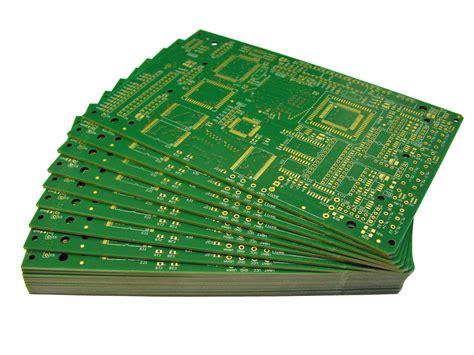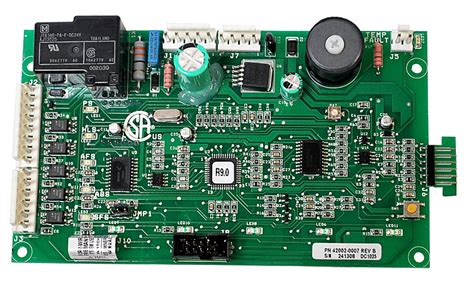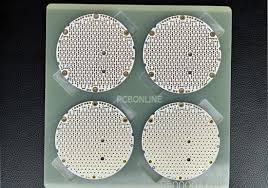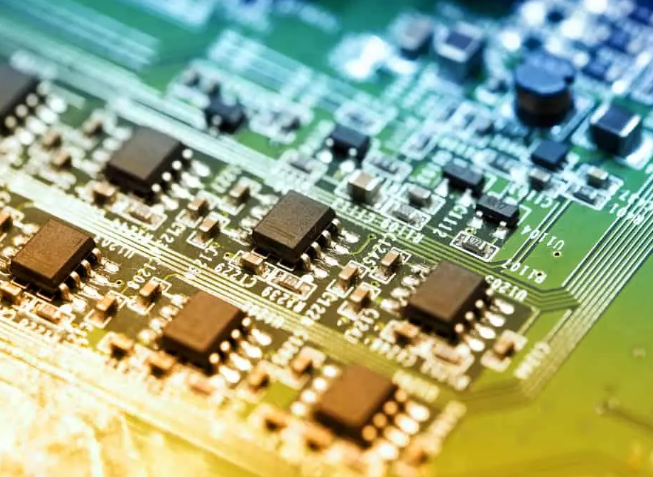Flex pcb applications
The flex pcb applications about Wearable Technology Innovations Using Flex PCBs
Wearable technology has seen a remarkable evolution over the past decade, driven by advancements in materials science and electronic engineering.
One of the pivotal innovations propelling this growth is the development and application of flexible printed circuit boards (flex PCBs).
These versatile components have revolutionized the design and functionality of wearable devices, offering unprecedented flexibility, durability, and integration capabilities.
Flex PCBs are composed of flexible substrates, typically made from polyimide or polyester films, which allow them to bend, fold, and twist without compromising their electrical integrity. This inherent flexibility makes them ideal for wearable technology, where devices must conform to the contours of the human body and endure constant movement. Consequently, flex PCBs have become a cornerstone in the design of modern wearables, enabling a new generation of devices that are both lightweight and unobtrusive.
One of the primary applications of flex PCBs in wearable technology is in fitness trackers and smartwatches.
These devices require compact, lightweight, and durable components to monitor various physiological parameters such as heart rate, steps taken, and sleep patterns. Flex PCBs facilitate the integration of multiple sensors and electronic components into a single, cohesive unit that can be comfortably worn on the wrist. Moreover, the flexibility of these PCBs allows for innovative designs that enhance user comfort and device aesthetics.
In addition to fitness trackers, flex PCBs are also integral to the development of smart clothing. These garments incorporate electronic components directly into the fabric, enabling functionalities such as biometric monitoring, temperature regulation, and even haptic feedback. Flex PCBs can be seamlessly integrated into textiles, providing the necessary electrical connections while maintaining the garment’s flexibility and comfort. This integration is particularly beneficial for applications in healthcare, where continuous monitoring of vital signs can be achieved without the need for bulky, intrusive devices.
Furthermore, the medical field has seen significant advancements with the incorporation of flex PCBs in wearable devices.
For instance, flexible biosensors can be attached to the skin to monitor glucose levels, hydration status, and other critical health metrics in real-time. These sensors rely on flex PCBs to maintain a low profile and conform to the body’s movements, ensuring accurate and reliable data collection. This capability is especially valuable for patients with chronic conditions, as it allows for continuous monitoring and timely interventions without disrupting their daily activities.
Another notable application of flex PCBs in wearable technology is in augmented reality (AR) and virtual reality (VR) headsets.
These devices require intricate circuitry to support high-resolution displays, motion sensors, and other components within a compact form factor. Flex PCBs enable the necessary miniaturization and flexibility, allowing for more comfortable and ergonomic designs. As AR and VR technologies continue to advance, the role of flex PCBs in enhancing user experience and device performance will undoubtedly expand.
In conclusion, the integration of flex PCBs into wearable technology has opened up a myriad of possibilities, driving innovation across various sectors. From fitness trackers and smart clothing to medical devices and AR/VR headsets, the unique properties of flex PCBs have enabled the creation of more sophisticated, user-friendly, and reliable wearables. As research and development in this field continue to progress, we can expect to see even more groundbreaking applications of flex PCBs, further transforming the landscape of wearable technology.

Medical Device Advancements with Flexible Circuitry
Flexible printed circuit boards (PCBs) have revolutionized various industries, and their impact on medical device advancements is particularly noteworthy. These innovative circuits, characterized by their ability to bend and conform to different shapes, have opened new avenues for medical technology, enhancing both the functionality and reliability of medical devices. As the demand for more compact, efficient, and versatile medical equipment grows, the role of flexible PCBs becomes increasingly significant.
One of the primary advantages of flexible PCBs in medical devices is their ability to reduce the size and weight of the equipment.
Traditional rigid PCBs often impose design constraints due to their inflexibility and bulkiness. In contrast, flexible PCBs can be folded, twisted, and shaped to fit into compact spaces, making them ideal for wearable medical devices such as fitness trackers, heart rate monitors, and glucose monitors. These devices benefit from the lightweight and adaptable nature of flexible PCBs, which contribute to patient comfort and compliance.
Moreover, flexible PCBs enhance the reliability and durability of medical devices.
The flexibility of these circuits allows them to withstand mechanical stress and vibrations better than their rigid counterparts. This is particularly important in applications where the device is subject to constant movement or bending, such as in implantable medical devices. For instance, pacemakers and neurostimulators, which require long-term implantation in the human body, benefit from the robust nature of flexible PCBs. The ability to endure the dynamic environment within the body ensures the longevity and consistent performance of these critical devices.
In addition to their physical advantages, flexible PCBs also offer significant electrical benefits.
They provide excellent electrical performance due to their ability to integrate multiple functions into a single, compact circuit. This integration reduces the need for interconnections and connectors, which are potential points of failure. Consequently, the overall reliability of the medical device is enhanced, and the risk of malfunction is minimized. Furthermore, the reduced number of interconnections simplifies the assembly process, leading to lower manufacturing costs and increased production efficiency.
The versatility of flexible PCBs extends to their compatibility with various medical applications.
They are used in diagnostic equipment such as ultrasound probes and MRI coils, where their ability to conform to complex shapes and surfaces is crucial. In therapeutic devices, flexible PCBs enable the development of advanced technologies like flexible endoscopes and minimally invasive surgical instruments. These applications benefit from the precise and reliable performance of flexible PCBs, which contribute to improved patient outcomes and reduced recovery times.
As the medical field continues to evolve, the integration of flexible PCBs into medical devices is expected to grow.
The ongoing advancements in materials and manufacturing techniques are likely to further enhance the capabilities of flexible PCBs, making them even more integral to the development of next-generation medical technologies. Researchers and engineers are continually exploring new ways to leverage the unique properties of flexible PCBs to create innovative solutions for complex medical challenges.
In conclusion, the application of flexible PCBs in medical devices represents a significant advancement in medical technology. Their ability to reduce size and weight, enhance reliability and durability, and provide superior electrical performance makes them indispensable in the design and development of modern medical equipment. As the demand for more sophisticated and efficient medical devices increases, the role of flexible PCBs will undoubtedly become more prominent, driving further innovations and improvements in patient care.

Automotive Industry Applications of Flex PCBs
In the automotive industry, the demand for advanced electronic systems has been steadily increasing, driven by the need for enhanced safety, improved performance, and greater convenience. One of the key technologies enabling these advancements is the flexible printed circuit board (flex PCB). Flex PCBs offer numerous advantages over traditional rigid PCBs, including their ability to bend and conform to various shapes, which makes them particularly well-suited for the complex and constrained spaces found in modern vehicles.
To begin with, flex PCBs are extensively used in automotive lighting systems.
The compact and flexible nature of these circuits allows for innovative lighting designs, such as adaptive headlights and intricate taillight assemblies. These advanced lighting systems not only improve visibility and safety but also contribute to the aesthetic appeal of the vehicle. Moreover, the durability and reliability of flex PCBs ensure that these lighting systems can withstand the harsh environmental conditions typically encountered in automotive applications, such as extreme temperatures and vibrations.
In addition to lighting, flex PCBs play a crucial role in the development of advanced driver-assistance systems (ADAS).
These systems, which include features like lane departure warning, adaptive cruise control, and automatic emergency braking, rely on a network of sensors and cameras to monitor the vehicle’s surroundings. Flex PCBs are ideal for these applications due to their ability to fit into tight spaces and their capacity to handle the high data transfer rates required for real-time processing. Furthermore, the lightweight nature of flex PCBs contributes to the overall reduction in vehicle weight, which is a critical factor in improving fuel efficiency and reducing emissions.
Another significant application of flex PCBs in the automotive industry is in infotainment systems.
Modern vehicles are equipped with sophisticated infotainment systems that provide navigation, entertainment, and connectivity features. These systems often require complex wiring and numerous connections, which can be efficiently managed using flex PCBs. The flexibility of these circuits allows for seamless integration into the vehicle’s interior, providing a sleek and clutter-free design. Additionally, the high reliability of flex PCBs ensures that these infotainment systems remain functional and responsive over the vehicle’s lifespan.
Flex PCBs are also instrumental in the development of electric and hybrid vehicles.
The power management systems in these vehicles require efficient and reliable circuitry to handle the high currents and voltages involved. Flex PCBs, with their excellent thermal management properties and ability to dissipate heat effectively, are well-suited for these demanding applications. Moreover, the compact nature of flex PCBs allows for more efficient use of space, which is particularly important in electric vehicles where battery space is at a premium.
Furthermore, the integration of flex PCBs in automotive applications extends to the realm of sensors and control units.
These components are essential for monitoring and controlling various aspects of the vehicle’s performance, such as engine management, transmission control, and braking systems. The flexibility and reliability of flex PCBs make them ideal for these applications, ensuring that the sensors and control units can operate accurately and consistently under the challenging conditions of automotive environments.
In conclusion, the automotive industry has greatly benefited from the adoption of flex PCBs, which have enabled the development of more advanced, reliable, and efficient electronic systems. From lighting and ADAS to infotainment and power management, flex PCBs have proven to be a versatile and indispensable technology. As the automotive industry continues to evolve, the role of flex PCBs is expected to expand further, driving innovation and enhancing the overall driving experience.

Enhancing Consumer Electronics with Flexible PCBs
Flexible printed circuit boards (PCBs) have revolutionized the consumer electronics industry, offering a myriad of advantages that enhance the functionality, durability, and design of modern devices. These innovative circuits, characterized by their ability to bend and flex, are increasingly being integrated into a wide range of consumer electronics, from smartphones and wearables to home appliances and gaming consoles. The adoption of flexible PCBs in these applications is driven by their unique properties, which address several critical challenges faced by traditional rigid PCBs.
One of the primary benefits of flexible PCBs is their ability to conform to complex shapes and fit into tight spaces. This flexibility allows for more compact and lightweight designs, which is particularly advantageous in the development of portable devices such as smartphones and tablets. By utilizing flexible PCBs, manufacturers can create sleeker and more ergonomic products without compromising on performance or reliability. Additionally, the reduced weight and size contribute to improved user experience, making devices easier to carry and handle.
Moreover, flexible PCBs offer enhanced durability and reliability, which are essential attributes for consumer electronics that are subject to frequent handling and movement.
The inherent flexibility of these circuits allows them to absorb shocks and vibrations more effectively than their rigid counterparts, reducing the risk of damage and extending the lifespan of the device. This is especially important in wearables, such as smartwatches and fitness trackers, which are constantly exposed to dynamic environments and physical stress.
In addition to their mechanical advantages, flexible PCBs also provide significant electrical benefits.
They enable more efficient routing of electrical signals, reducing the need for multiple connectors and interconnections. This not only simplifies the overall design but also minimizes potential points of failure, leading to improved signal integrity and performance. Furthermore, the ability to integrate multiple functions into a single flexible PCB can reduce the overall complexity and cost of the device, making advanced technologies more accessible to consumers.
The versatility of flexible PCBs extends beyond their physical and electrical properties.
They also offer greater design freedom, allowing engineers to explore innovative form factors and functionalities. For instance, foldable smartphones and rollable displays are made possible by the use of flexible PCBs, which can bend and flex without breaking. This opens up new possibilities for product design, enabling the creation of devices that can adapt to different user needs and preferences.
Another notable application of flexible PCBs in consumer electronics is in the realm of Internet of Things (IoT) devices.
These devices often require compact and efficient circuitry to connect and communicate with other devices seamlessly. Flexible PCBs are ideal for IoT applications due to their ability to integrate various sensors, antennas, and other components into a single, cohesive unit. This integration facilitates the development of smart home devices, wearable health monitors, and other IoT-enabled products that enhance convenience and connectivity in everyday life.
In conclusion, the integration of flexible PCBs into consumer electronics has brought about significant advancements in design, functionality, and reliability. Their unique properties address many of the challenges associated with traditional rigid PCBs, enabling the creation of more compact, durable, and innovative devices. As technology continues to evolve, the role of flexible PCBs in enhancing consumer electronics is likely to expand, paving the way for even more groundbreaking products and applications.







